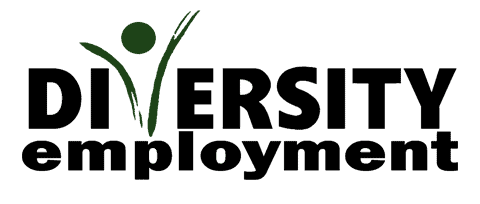
Remote Work for Executives and Leaders: Managing and Growing a Remote Workforce
Introduction: Remote Work for Executives and Leaders
Embarking on the journey of executive remote work can seem daunting. But, it’s an exciting frontier for growth and opportunity. This comprehensive guide is designed for you, the aspiring leader. It’s a map to navigate the complex but rewarding world of managing and growing a remote team.
Here, you’ll discover the essence of diverse job strategies. These are crucial for today’s leaders. Why? Because they pave the way for inclusive hiring practices and job market diversity. And they help you develop stand-out strategies for your team.
From leveraging technology to fostering a strong culture, we cover it all. Each section provides actionable tips and insights. We aim to equip you with the knowledge to lead with confidence. The goal is simple: building a thriving, diverse, remote workforce.
So, whether you’re new to the remote leadership scene or looking to refine your approach, this guide is for you. Let’s explore how you can lead your remote team to success. Ready to shape the future of work? Let’s dive in.
The Significance of Customization and Defined Goals
In executive remote work, understanding the diverse job strategies needed for success is crucial. First, let’s talk about customization. It’s all about knowing your team’s unique needs. Each member might need something different to thrive. This approach can boost everyone’s work. Next, you must set clear, detailed goals. How? Start by stating precisely what you need from everyone. That means making roles, standards, and deadlines crystal clear. This way, the team moves together like a well-oiled machine.
Why Customization and Goals Matter:
- Boosting individual performance: When you tailor support, people feel seen. This can lead to better work.
- Keeping the team on track: Clear goals mean fewer mix-ups. Everyone knows what’s expected and when.
Moreover, by prioritizing employment rights under the ADA, leaders can ensure that their diverse candidate support also meets compliance needs, further enhancing the inclusivity of their practices. This inclusive approach forms the cornerstone of effective remote leadership. Also, read our guide for more information on diverse job strategies and Developing an Effective EEO Policy.
External Resources for Setting Goals:
- For more detailed guides on setting practical workplace goals, visit the U.S. Small Business Administration website.
- Explore SHRM’s resources for managing remote employees and establishing clear work expectations.
Understanding the significance of customization and defined goals is just the first step. It paves the way for more robust communication, culture, and a thriving remote team environment.
Using Technology for Better Communication and Community
Furthermore, embracing diverse job strategies means leveraging the right tech tools. In today’s world, technology bridges gaps. For remote teams, it’s a game-changer for communication and building community. Let’s dive deeper.
Choosing the Right Technologies:
- Video Conferencing: It’s more personal than emails or messages. It helps teams feel connected.
- Project Management Tools keep everyone updated on who’s doing what and by when.
- Messaging Platforms: For quick questions or updates, a dedicated channel keeps things streamlined.
Regular, structured chats are critical. This includes daily quick catch-ups and weekly in-depth meetings. Why does this matter? Because it keeps everyone on the same page. Plus, it helps build a sense of community. Even small talk can make a big difference.
Additional Strategies:
- Virtual Team-Building: Don’t just talk work. Plan fun virtual activities to strengthen bonds.
- Remote Work Training: Offer training for remote work best practices. It helps, especially for newcomers.
Lastly, for leaders, knowing about executive remote jobs and their challenges can offer insights into better managing their teams. When used correctly, technology can significantly enhance productivity and team spirit. For leaders keen to keep up with the ever-changing job market diversity, integrating advanced tech tools into their daily operations is a must.
Recommended External Resources for Executive Remote Work:
- For insights on the latest tech tools for remote work, look at TechSoup.org.
- Explore successful case studies of technology in remote work on CaseFoundation.org.
Remember, fostering more robust connections and a vibrant community among remote team members is at the heart of using technology.
Building a Strong Remote Culture
Creating a solid remote culture is vital. It’s about more than work. A good culture makes everyone feel part of something bigger. So, how do we build this culture? Let’s explore.
Key Elements to Foster a Strong Culture:
- Company Values: Communicate what your company stands for. These values guide behavior and decisions.
- Inclusivity: Make sure everyone feels welcome and valued. Diverse job strategies include giving everyone a voice.
- Recognition: Celebrate achievements, big and small. It boosts morale and shows appreciation.
Also, it’s essential to have regular virtual gatherings. These can be anything from team meetings to casual coffee chats. This keeps the team spirit alive.
Culture Building Activities:
- Virtual Events: Host online events that align with your company values. It’s fun and builds unity.
- Cultural Sharing Sessions: Encourage team members to share their cultures and backgrounds. This promotes diversity and inclusion.
Remember, supporting stand-out strategies and diverse candidate support is not just talk. Actions speak louder. So, making these practices evident in your executive remote work culture is critical. Also, read more on how mistakes in diversity programs can impact corporate diversity efforts. Plus, maintaining openness to job market diversity effectively enhances the inclusivity of your hiring practices.
A solid remote culture supports various diverse job strategies. It leads to a more connected, motivated, and productive team. Making your executive remote work environment one where everyone feels included and valued is crucial. It’s a win-win for all.
The Process of Hiring and Empowering Diverse Candidates
As we delve deeper into diverse job strategies, hiring and empowering diverse candidates stand out. It’s critical to a vibrant remote team. So, how do we ensure that we’re doing it right? Let’s break it down.
Strategies for Hiring Diverse Talents:
- Inclusive Job Ads: Use language that welcomes all. It sets the tone from the start.
- Varied Recruitment Channels: Reach out far and wide. This increases your chances of finding diverse talents.
- Blind Hiring Practices: Focus on skills and experience, not personal info. It’s fair and effective.
After hiring, support is crucial. Especially for those new to executive remote work. Here’s how you can do it.
Supporting Your Diverse Team:
- Onboarding: A solid start makes a big difference. Ensure new hires feel welcome and informed.
- Accessible Resources: Provide tools and info everyone can use. This fosters independence and growth.
- Continuous Learning: Offer training, especially in inclusive hiring practices. It’s suitable for the individual and the team.
These steps show your commitment to diverse candidate support. They also highlight the importance of inclusive hiring practices. For further insights, the economic outlook can influence your hiring. This knowledge can help refine your approach to stand-out strategies in the job market diversity landscape.
External Links for More Information:
- The U.S. Equal Employment Opportunity Commission is a valuable resource for guidelines on shaping inclusive job ads.
- Learn more about blind hiring practices at the Harvard Business Review.
In essence, to foster a genuinely diverse and empowered remote workforce, it takes deliberate steps in both hiring and ongoing support. Doing so not only enriches your team but also ensures a wide range of perspectives and ideas, which is vital for innovation and growth.
Importance of Flexibility and Keeping a Balance
Flexibility is a cornerstone of executive remote work. It’s also crucial in diverse job strategies. Why? Because everyone’s different. Understanding and respecting this can make your team stronger. Let’s see how.
Embracing Flexibility:
- Various Work Hours: Not everyone peaks from 9 to 5. Some might do better at different times.
- Remote Work Options: Working from anywhere can be a huge plus. It brings in talent from everywhere.
But it’s not just about work. Life outside the job matters, too. Keeping a healthy work-life balance is critical. It helps everyone do their best.
Maintaining a Healthy Work-Life Balance:
- Encourage Breaks: Short, regular breaks can boost focus and creativity. They’re essential.
- Provide Support: Offer resources on managing workload and stress. It shows you care.
Remember, focusing on results, not just activity, plays well with flexible schedules. This approach values output over hours logged. It’s a win for the team and diversity strategies.
Ultimately, blending flexibility with a balanced life brings out the best in everyone. It aligns perfectly with inclusive hiring practices and diverse job strategies. This balance is crucial, not just for well-being but also for productivity and innovation. By prioritizing these aspects, leaders can nurture a thriving and diverse executive remote workforce.
Future Trends: Executive Remote Work
As we look ahead, the importance of adapting to future trends cannot be overstated. For executives, staying informed is critical. This means keeping an eye on how remote work is shaping the job market.
Understanding Future Trends:
- Increased Remote Opportunities: Expect more jobs to go remote. It’s becoming a norm.
- Technological Advances: Tech will play a more significant role. It will make managing remote teams smoother.
- Focus on Mental Health: More companies will prioritize this. Happy teams are more productive.
So, what should leaders do? First, be open to change. This includes adapting diverse job strategies to fit new norms. Also, it’s essential to foster continuous learning within your team. This keeps everyone up-to-date and competitive.
Role of Executives in Embracing Changes:
- Proactive Learning: Stay ahead with the latest insights. This helps in making informed decisions.
- Inclusive Decision Making: Involve your team in changes. It ensures everyone feels valued.
- Future-Proofing Strategies: Develop flexible plans. They should adapt to changes quickly.
The future of executive remote work is dynamic. Executives must lead by example and embrace these changes. Doing so ensures their organizations remain relevant and attractive to top talents. Moreover, integrating these insights into your diverse job strategies will position your company well for the future. Being proactive and adaptive are critical traits for leaders in the evolving world of remote work.
FAQs
Do you have more questions on remote work and diverse job strategies? Here are additional answers to help you navigate.
How can I make my remote meetings more engaging?
Keep them short and interactive. Use polls, and always allow time for questions. This keeps everyone involved.
Can remote work hinder team bonding?
Not necessarily. Plan regular virtual hangouts. Share non-work updates, too. These steps can strengthen bonds.
What’s the best way to handle time zone differences?
Be flexible with meeting times. Also, use asynchronous communication when possible. This respects everyone’s hours.
How do I know my remote team is productive?
Focus on outcomes, not just hours. Set clear goals. Also, regular check-ins can help track progress.
Can remote work fit all roles within an organization?
Not always. Some roles may need a physical presence. Yet, many can adapt with the right tools and strategies.
These FAQs aim to clear up doubts about remote work and its complexities. They show that managing a diverse and remote team is very much achievable with the right approach. Always remember that being open, flexible, and communicative are keys to success in the evolving world of work.
Conclusion
Mastering executive remote work is about embracing diversity and flexible job strategies. It involves individualizing approaches, leveraging technology, and fostering a strong culture. Also, hiring and supporting diverse candidates is critical. Leaders can ensure their teams thrive and excel by maintaining flexibility and keeping abreast of future trends.
Indeed, the digital workspace is evolving. By employing diverse job strategies, you can stay ahead. Remember, every decision should aim to enhance inclusivity and diversity. This will enrich your team’s work experience and output.
Are you feeling ready to dive in? Or maybe looking for more information? Join Diversity Employment. Here, we believe in empowering every individual. We provide resources, insights, and a supportive platform. It’s all about thriving in today’s diverse job market. So, why wait?














